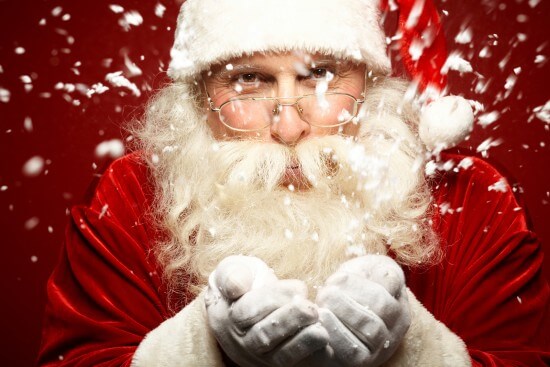
Santa Claus hasn’t always looked like the jolly old fellow we know today, and all of the things we have come to love and recognize as part of Santa Claus came from somewhere. Let’s take a look at where the traditions of Santa Claus came from:
The mythological characters Odin, Thor, and Saturn gave us the basis for many of Santa’s distinctive characteristics. But the most influential figure in the shaping of today’s generous and loving Santa Claus was a real man: St. Nicholas of Turkey.
Hanging Stockings:
The tradition of hanging stockings by the fireplace comes as a direct result of St. Nicholas and his generosity. The story goes that St. Nicholas heard about a family with three daughters. The family was poor and could not afford the necessary dowries to marry off the daughters. So, the father was left with no choice but to sell one of his daughters into slavery to pay for the other two to wed. St. Nicholas heard of the situation, and went to the home late one night, and threw three bags of gold down the chimney, and one landed in each of the three girl’s stockings, which were hung by the fire to dry.
Gifts for the good, not the bad:
The idea of giving gifts to good little girls and boys, and not the bad also came from the life of St. Nicholas who tried to help those who were needy and deserving. The accounts of his generosity and good deeds mixed with local folk lore, and transformed his gift giving into a mystical being who rewarded the good and punished the bad with coal.
Leaving cookies and milk for Santa:
St. Nicholas’s Feast Day is December 6th. It was tradition to for children to leave out food for the saint and straw for his horses, and something for his attendant on the night before. As a custom, the next morning, the children would awake to find their offerings gone, and in their place were sweets and toys.
Santa’s beard and bag of toys:
This tradition was sort of an accumulation of many others, but gets most of its roots from the Vikings. The Vikings brought with them their beliefs of deities and their main god Odin, who in the guise of his December character came to earth dressed in a hooded cloak, to sit and listen to his people and see if they were contented or not. He carried a bag of goods he distributed to the needy or worthy. He had long white hair and a long white beard.
The reindeer:
The Scandinavians were the first to introduce the concept of Santa Claus with reindeer, as they believed that the reindeer were herded to lower pastures as a sign of winter. However, this eventually led to the belief of reindeer pulling Santa’s sleigh. Clement Moore, a minister, wrote a poem about Santa for his children, and in it he named eight reindeer, and made mention that they pulled the sleigh.
The sleigh:
The sleigh was often used in ancient times to get around, however, what really tied it to Santa Claus was British stores adding trains and sleighs to their displays of Santa to liven them up. So, we can thank marketing for this image.
There are many other traditions of Santa, most of them have root in European folklore and custom. Clement Moore took many of the beliefs and tales and wove them together with some of the more modern thoughts on Santa to help create an image of a jolly old elf, rather than a saint, who flew, used chimneys to deliver gifts, and traveled the world in one night. With the help of artist Thomas Nast, as well as Coca Cola, and Norman Rockwell we get the Santa we know today with his elves, his home in the North Pole, and more.